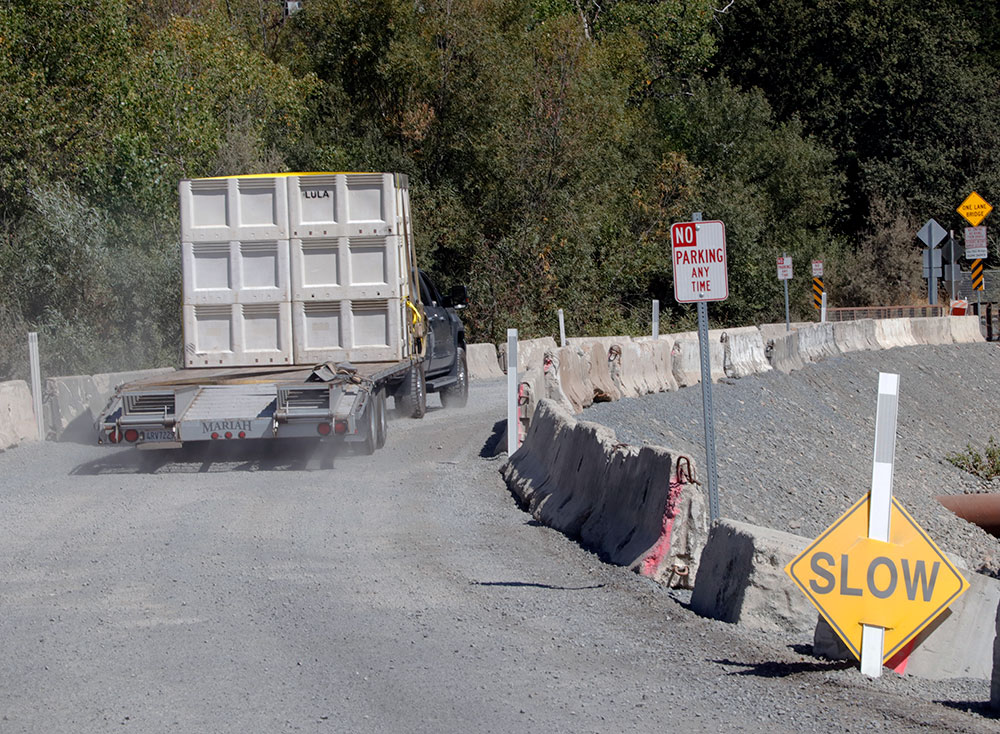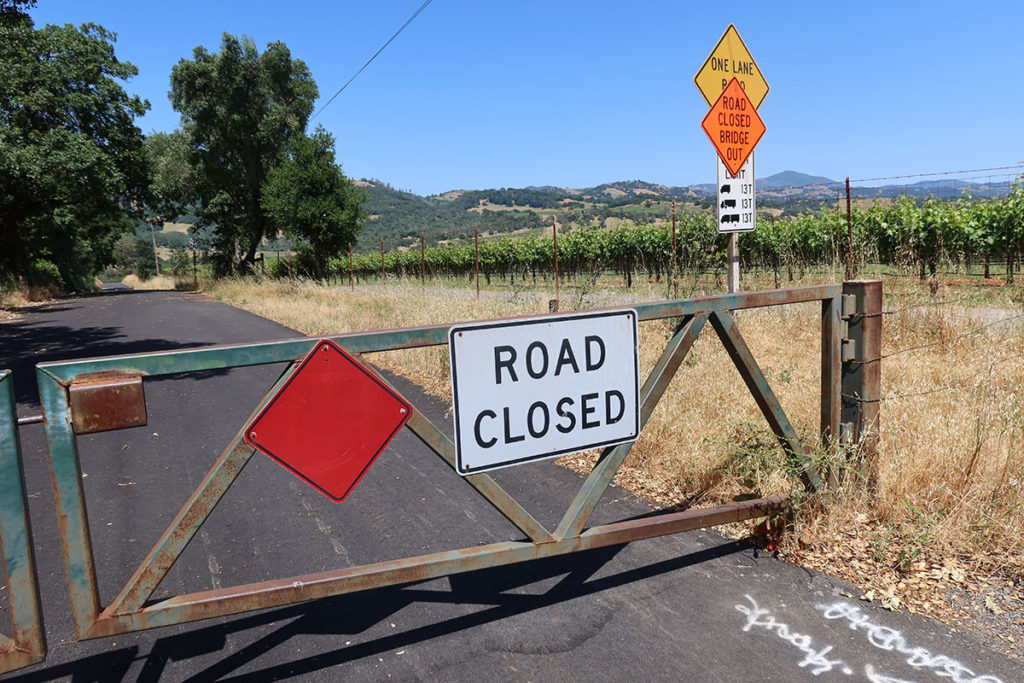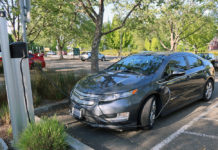
After over 100 years of pleading, begging, negotiating and complaining, the Cloverdale area finally got its wish: The bridge over the Russian River at the hamlet of Asti has been approved for a permanent span, thanks to final action by the County Board of Supervisors last week.
A permanent bridge is intended to enhance public safety, and eliminate the financial cost and environmental impact of installing and removing a temporary bridge each year. That price tag is upwards of $450,000 each year, depending on channel changes of the river, and sometimes involves extensive dredging with its negative environmental impact.
“About 102 years ago the Cloverdale Chamber wrote to the Sonoma County Board asking for a permanent bridge at the Asti crossing,” said Geoff Peters of Showa Farm, located just on the east side of the temporary bridge on Highland Ranch Road.
“Had the county built a permanent bridge 50 years ago it would have easily paid for itself by now,” he continued. “And costs are not decreasing, they are increasing.”

Peters is also the program manager of the Northern Sonoma County Community Emergency Response Team (CERT). He said that about 10 years ago the Alexander Valley Citizens League was formed, and “raised about $20,000 in donated funds to pay an engineering firm for an initial study of how and where a bridge could be built at Asti.”
Public safety, economics and the environmental benefits of the bridge were paramount considerations in their recommendations. Primary among those was public safety, a concern that has become critical among residents in the wake of multiple recent fires in the area.
Currently, drivers must travel north on River Road more than 10 miles to Crocker Road, which becomes First Street west of Hwy 101, there to cross the river on the Cloverdale Bridge when a temporary bridge is not in place. There is no practical exit to the south.
“This project has overwhelming community support from homeowners and neighbors who for too long have faced the risk of being trapped if the seasonal bridge is not open and a wildfire cuts off River Road north to Cloverdale,” said 4th District Supervisor James Gore.
“Should a fire occur near the First Street Bridge [in Cloverdale] and move toward the southwest, it would effectively block the only evacuation route available to those in the Cloverdale-Asti area east of the Russian River,” Peters said. “Fire officials, citizen groups and local elected officials have been warning about this for years, and after the events in Paradise and the fires in the past 10 years it became a major concern.”
Jason Jenkins, chief of the Cloverdale Fire Department, said, “It is a critical piece of infrastructure that will really improve our ability to protect property and minimize the spread of fire.”
He continued, “I think locals in the area have a huge concern for their safety and egress. Luckily we haven’t had any major fires in the area that have required that, but that doesn’t mean that it couldn’t happen at any time.”

Year-Round Use
Chief Jenkins also said that aside from larger disasters, the bridge could serve a valuable purpose more often. “I think the most important thing is that the bridge will dramatically improve response times for engines, for bulldozers, for water tenders, as well as for law enforcement coming up into the area to assist with evacuations,” he said. Medical emergency access would also be improved.
Peters made it clear that residents in the area are open to partially funding the project to see it through. “Nearly every property owner in the affected area has shown support for construction of a permanent bridge even if they must create a special financing district and tax ourselves $4 million as a local contribution to the costs,” he said.
“Finally, and this is the least important factor, there have been estimates that a permanent bridge would increase real estate values (and real estate taxes to the County) by about 5% to 10% if there were a permanent bridge,” Peters said.
Following the Sept. 10 approval by the Board of Supervisors, the Department of Public Infrastructure can proceed with the bridge planning and design phases. Department officials are expected to return to the Board at a later date with additional financing recommendations, which could include the formation of an assessment district. The estimated construction cost of the project is $30 million.








